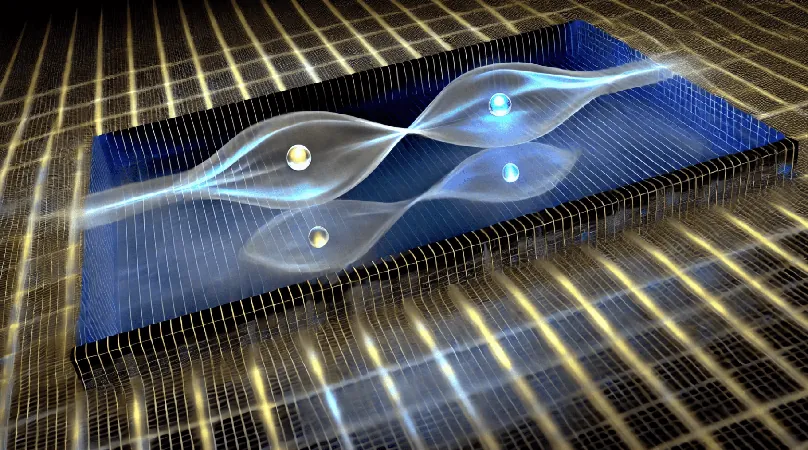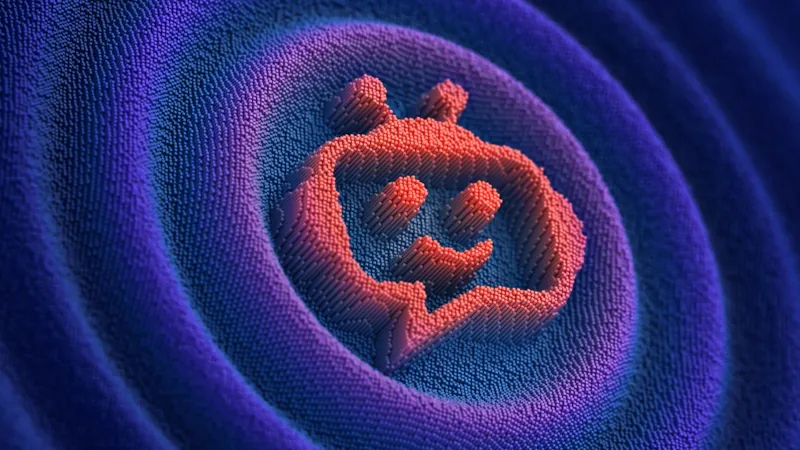
Breakthrough in Quantum Physics: Majorana Fermions Produced Through Quantum Interference!
2024-09-24
Author: Siti
In an exciting advancement in the field of quantum physics, researchers have demonstrated that quantum interference within nanoelectronic circuits can generate entities that mimic half of an electron. This groundbreaking discovery promises to pave the way for advances in quantum technology and computation, potentially ushering in a new era of innovation.
The study, published in *Physical Review Letters*, highlights how the complex interplay of quantum mechanics influences the behavior of nano-scale circuits. The scientists behind this research, Professor Andrew Mitchell from University College Dublin and Dr. Sudeshna Sen from the Indian Institute of Technology in Dhanbad, have focused on the application of these quantum principles in understanding the peculiar nature of electrons in nanoscale environments.
Traditionally, electrons have been regarded as fundamental particles that cannot be divided. However, quantum mechanics reveals a remarkable possibility: by creating conditions where electrons face a 'choice' of paths through a nanoelectronic circuit, it is possible for them to behave as though they have been split into 'split-electrons.' Dr. Sen explained the implications of miniaturization, noting, 'As components shrink to nanometer scales, we enter a realm where quantum mechanics reigns, defying our conventional intuitions about physics.'
This phenomenon mirrors the famous double-slit experiment, which illustrates the wave-particle duality of electrons. In this setup, when electrons are fired through two narrow slits, they create an interference pattern on a detecting screen, much like waves overlapping and interacting. Importantly, individual electrons can interfere with themselves, showcasing their dual wave-particle nature.
When applied to nanoelectronic circuits, the principle of quantum interference means that so-called 'split-electrons' can form through careful manipulation of electron pathways. Professor Mitchell elaborated, 'By forcing electrons close enough together to induce strong repulsion, we can alter the quantum interference patterns, leading to a behavior analogous to splitting an electron.'
This groundbreaking finding introduces the concept of a Majorana fermion, a particle posited by Italian physicist Ettore Majorana in the 1930s but not yet isolated in experiments. The Majorana fermion holds immense potential for the evolution of topological quantum computers, which are designed to exceed the capabilities of classical computers by leveraging the unique properties of quantum states for processing information.
Professor Mitchell commented on the importance of their discovery, stating, 'There has been significant interest in generating Majorana fermions, as they serve as a vital component in the pursuit of robust quantum computers.' The research suggests that utilizing quantum interference effects in nanoelectronic devices could be a promising pathway toward producing and manipulating these elusive particles.
As global interest in quantum computing continues to surge, this research offers a glimpse into a future where Majorana fermions could power revolutionary advancements in computing technology, potentially transforming everything from cryptography to artificial intelligence. Stay tuned for updates as scientists further explore the exciting implications of this discovery!






 Brasil (PT)
Brasil (PT)
 Canada (EN)
Canada (EN)
 Chile (ES)
Chile (ES)
 España (ES)
España (ES)
 France (FR)
France (FR)
 Hong Kong (EN)
Hong Kong (EN)
 Italia (IT)
Italia (IT)
 日本 (JA)
日本 (JA)
 Magyarország (HU)
Magyarország (HU)
 Norge (NO)
Norge (NO)
 Polska (PL)
Polska (PL)
 Schweiz (DE)
Schweiz (DE)
 Singapore (EN)
Singapore (EN)
 Sverige (SV)
Sverige (SV)
 Suomi (FI)
Suomi (FI)
 Türkiye (TR)
Türkiye (TR)